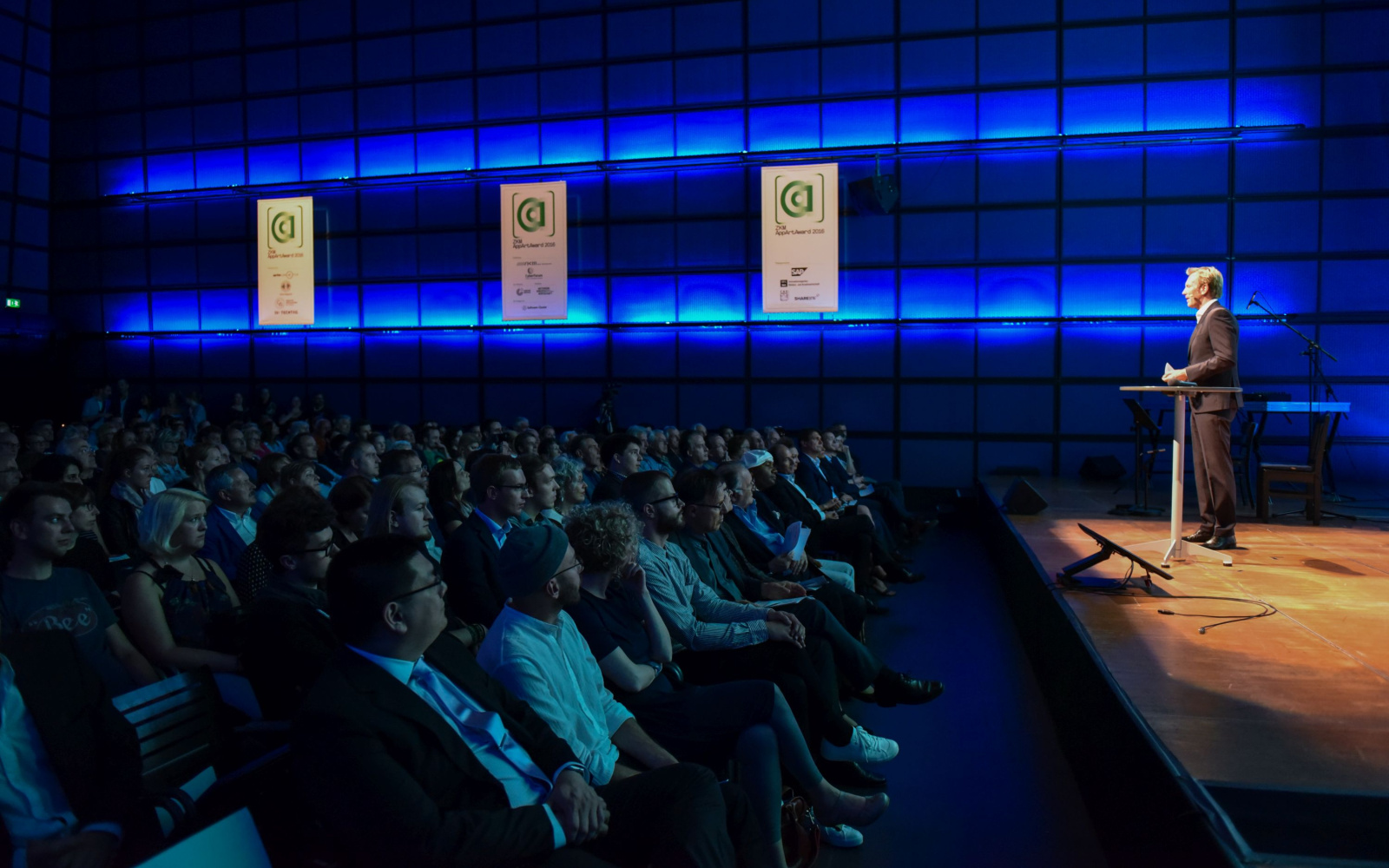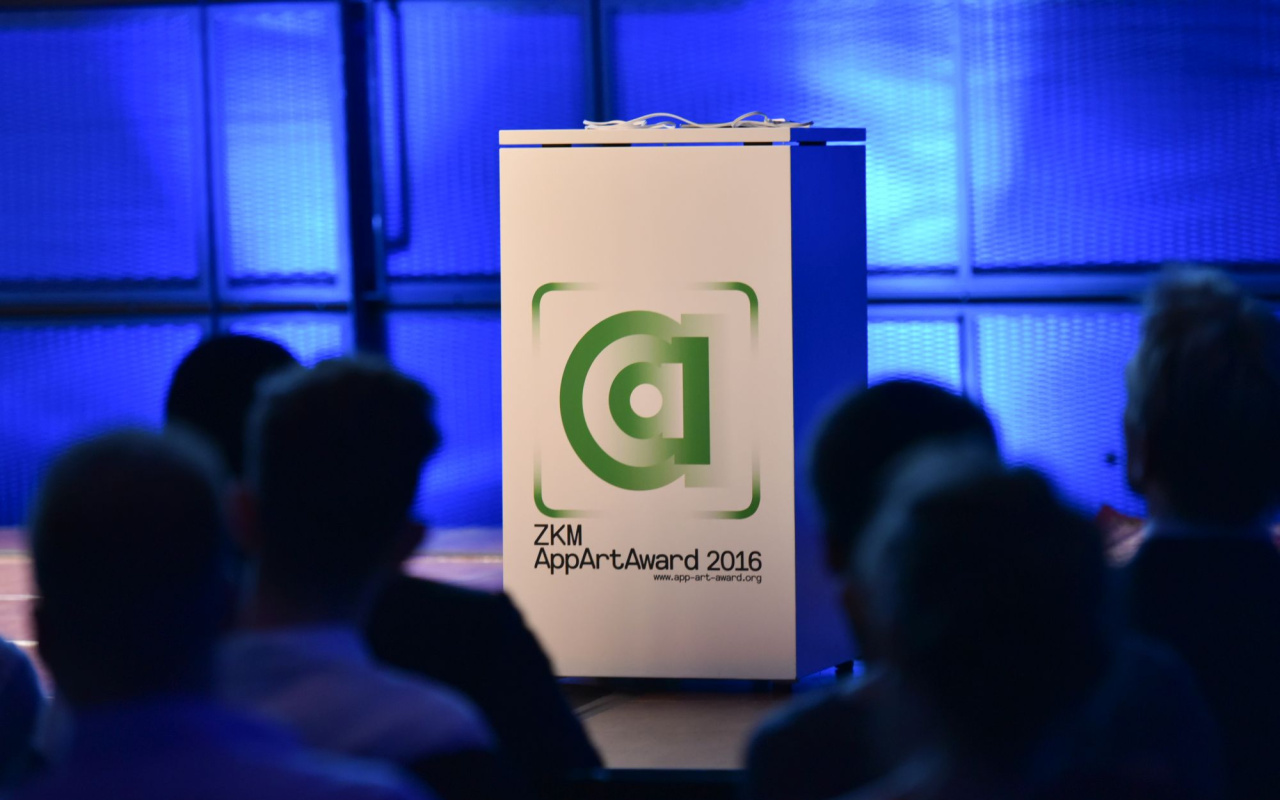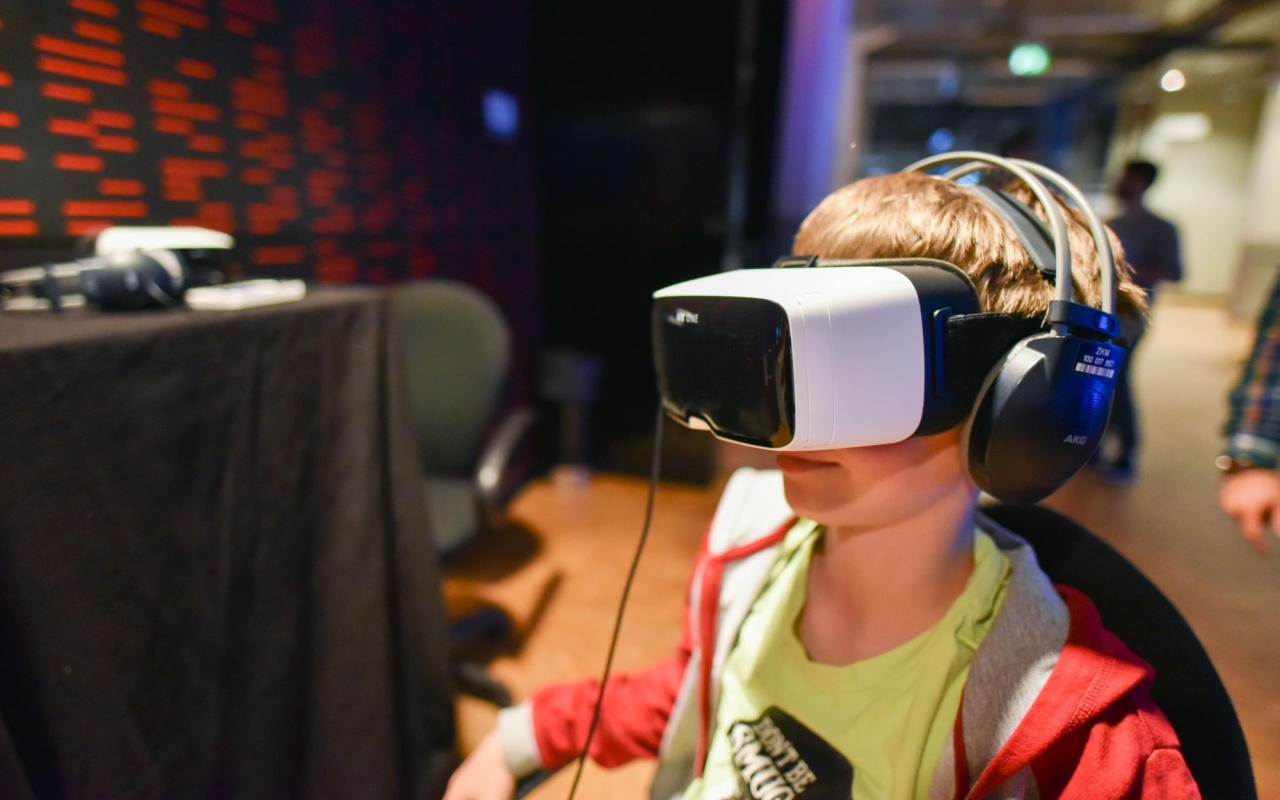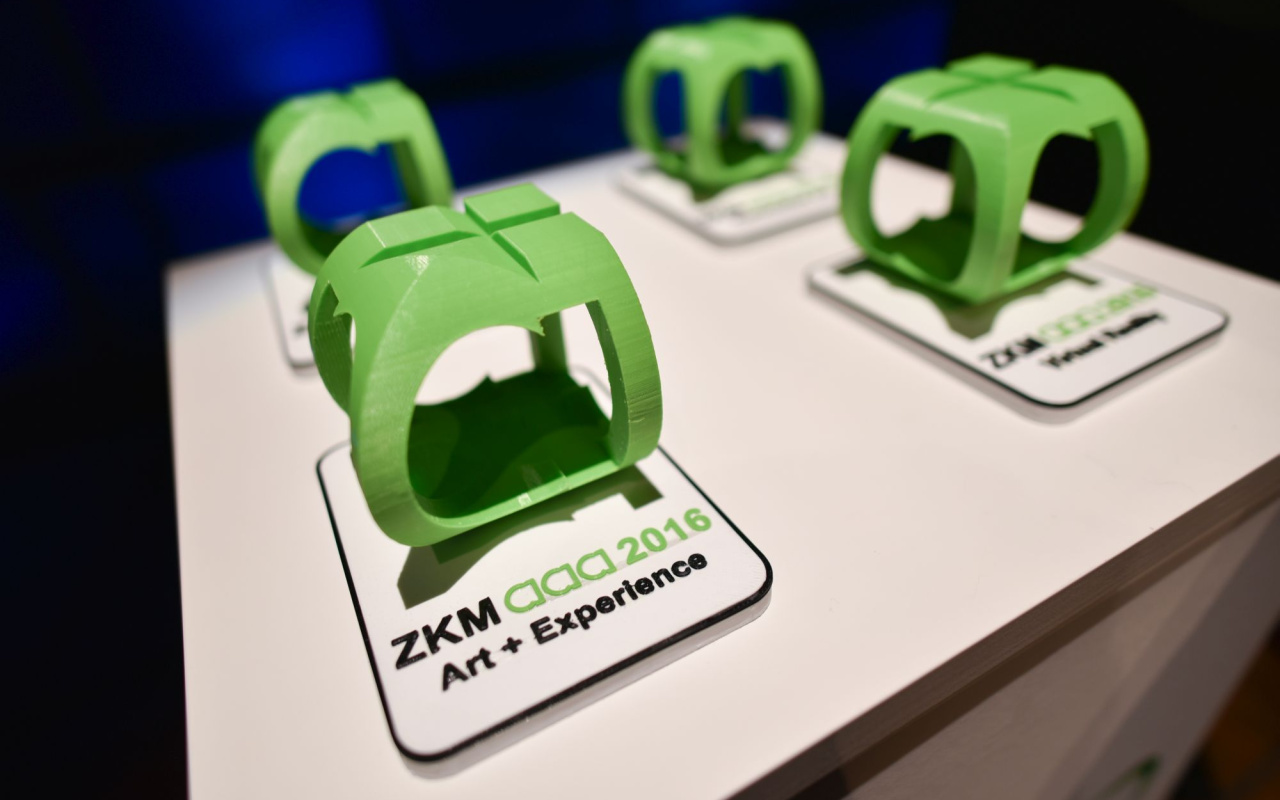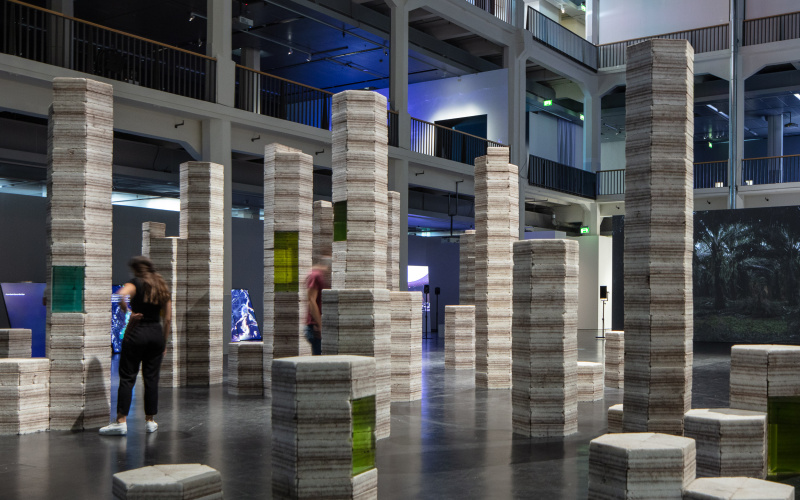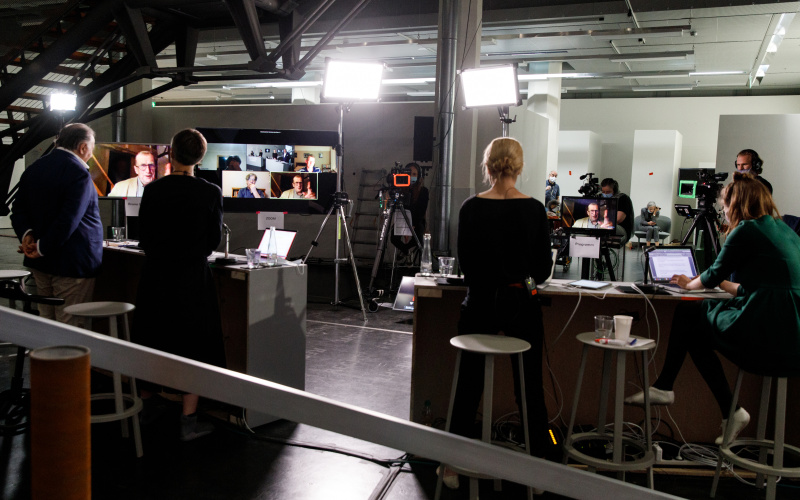Future Apps – ZKM is presenting the annual AppArtAward
The AppArtAward at ZKM | Center for Art and Media Karlsruhe is an international competition for artistic works in an app format. Having started up in 2011 with representatives from Cyberforum e.V., CAS Software AG and ZKM, it has since been exploring the aesthetic, creative possibilities of the medium in constantly changing categories.
The AppArtAward is characterized by the combination of a seismograph, trend barometer and crystal ball. Many of the entries in recent years reflected the creative potential of technological revolutions and innovation. This includes several audio visual works which, for example, transform data into sound, movements into pictures and sound, or a smartphone or tablet into a VJ-DJ tool. In fact, 7 of the total 21 winning apps in the last six years were categorized as Sound Art.
Other categories, such as Cloud and Crowd Art, gave us a glimpse of a future which up until now had only very rarely been ventured into by artistic works. Successful examples include the apps »Electric Sheep« by Scott Draves, which won the Cloud Art category award in 2012, and LASACT, an interactive, audio visual light sculpture controlled by an app, for which the artist team received the Crowd Art prize in 2014.
Virtual Reality is opening up a new aesthetic space
“It’s easy to predict the future if you create it yourself”, is the motto of ZKM CEO Prof. Peter Weibel. These designers of the future also include Sascha Haus and Onat Hekimoglu, developers of the virtual reality app »Raum« (»Space«), which explores the limits and possibilities of simulation in virtual space. Users, equipped with VR glasses, at first finds themselves in a fairly realistic office room which then turns into a seemingly endless universe – making them rediscover their own parameters of perception.
The potential of virtual reality appears to be infinite. 2016 is a crucial year for this technology according to Die Welt, referring to statistics allegedly showing that VR will be a big hit from 2017-2018 once enough households have the necessary hardware. The gaming industry is expecting billions in turnover, with Google and the New York Times already producing apps and content for VR. With »Tilt Brush«, Google brought an app onto the market that could be used to create 3D paintings in virtual space - another indication that VR is opening up a new aesthetic space for museums and artists to play within the next few years.
Connected App Art
A recurring theme that has consistently come up at the AppArtAwards, and this year has its very own category for the first time, is »Connected Art«. Behind this is the much-discussed and sometimes very vaguely defined Internet of Things, and behind that the network metaphor, which primarily depicts the ubiquitous interlinking of the analogue and digital world. When applied to the AppArtAward, this connection is manifested in that apps are no longer being used as a self-contained medium, but function much more as a bridge. In the age of connectivity, mobile devices transcend themselves and provoke changes in reality. This kind of dissemination also applies to app support media. Whilst the AppArtAward has so far only been looking for artistic applications for tablets and smartphones, current trends indicate that soon there will not be just one app for everything, but they could also be built with all kinds of embedded systems. Those that are already known include wearables like glasses and smart watches – and another phrase on everyone’s lips is »Smart Home« – the connected, intelligent home that aims to adapt perfectly to your personal requirements.
The huge significance of »interlinking« is one of the many things that the Future Institute in Frankfurt is devoted to. The head of the institute, Matthias Horx, identifies connectivity as a megatrend.
Megatrends are deep currents of change. As constants of development in global society, they span several decades. A megatrend affects every single person and spans across all levels of society: economics and politics, as well as science, technology and culture. Megatrends change the world – perhaps slowly, but fundamentally and for the long term.
With the app »sacrificium«, Joanna Dauner has not only won this year’s prize in the Connected Art category, but she has also created a parable for the variety of terminology and the major social changes associated with it. Sacrificium is an interactive installation. As a component it includes an app which is used to light a prayer candle in a faraway village, which burns for as long as the app is open and therefore no other activities are carried out on the smartphone. The connection between the digital and analogue world, this transposition of a traditional prayer candle into the age of the Internet of Things, in this case the transformation of a purely analogue object into a smart object, visibly demonstrates the various levels of significance of connectivity and points towards a fluid analogue/digital future.
Über die Autorin
Julia Jochem is a former research associate at ZKM and is now working as Project Manager at Karlsruhe Institute of Technology (KIT).
Category
News Category
- tracks & records
